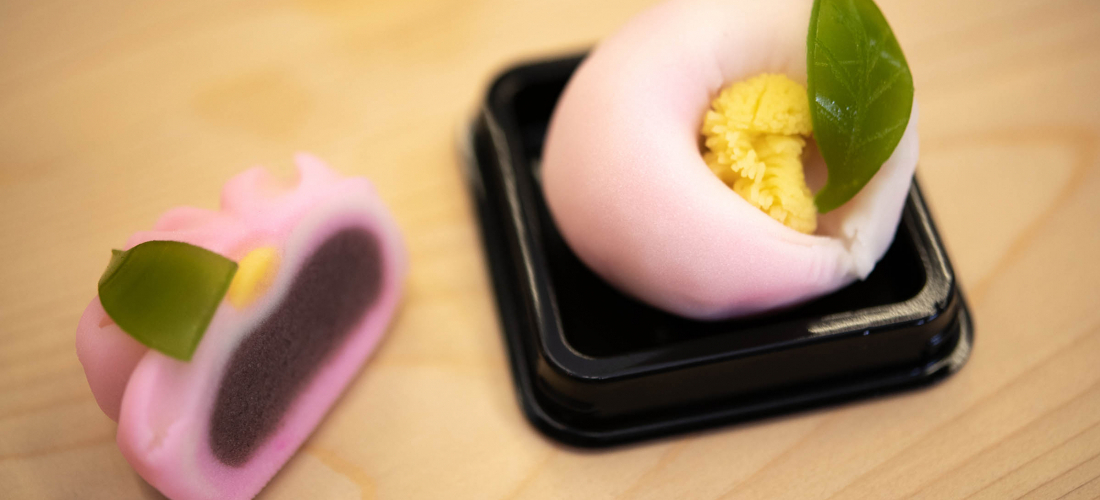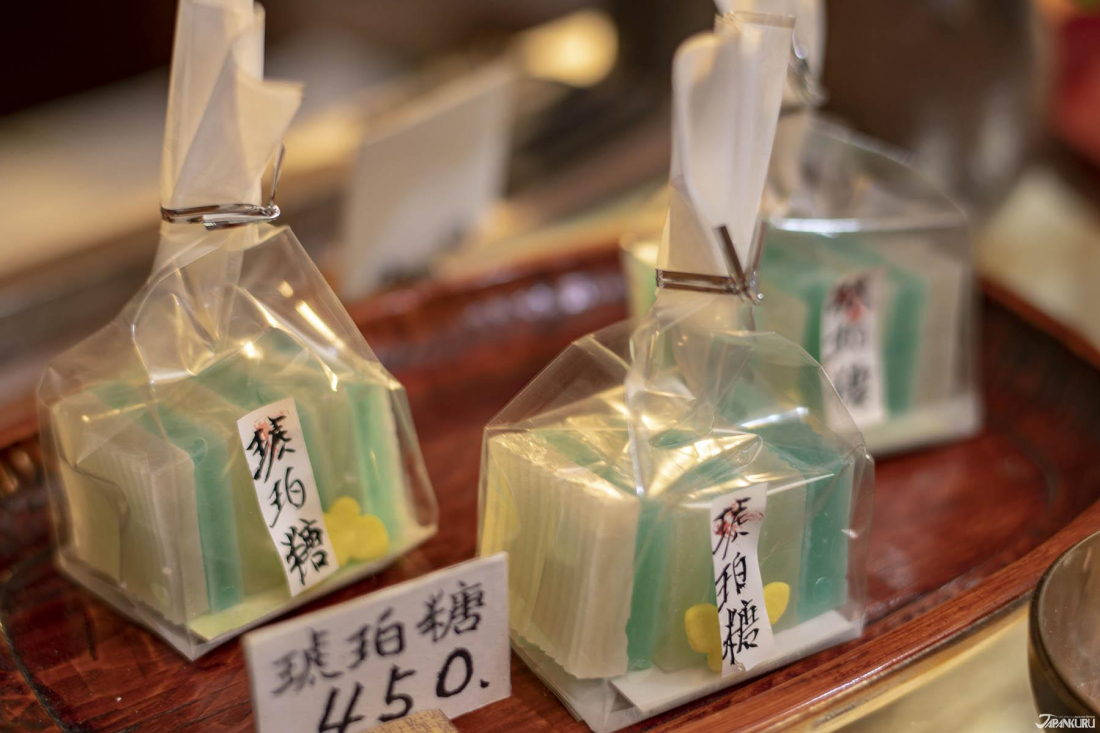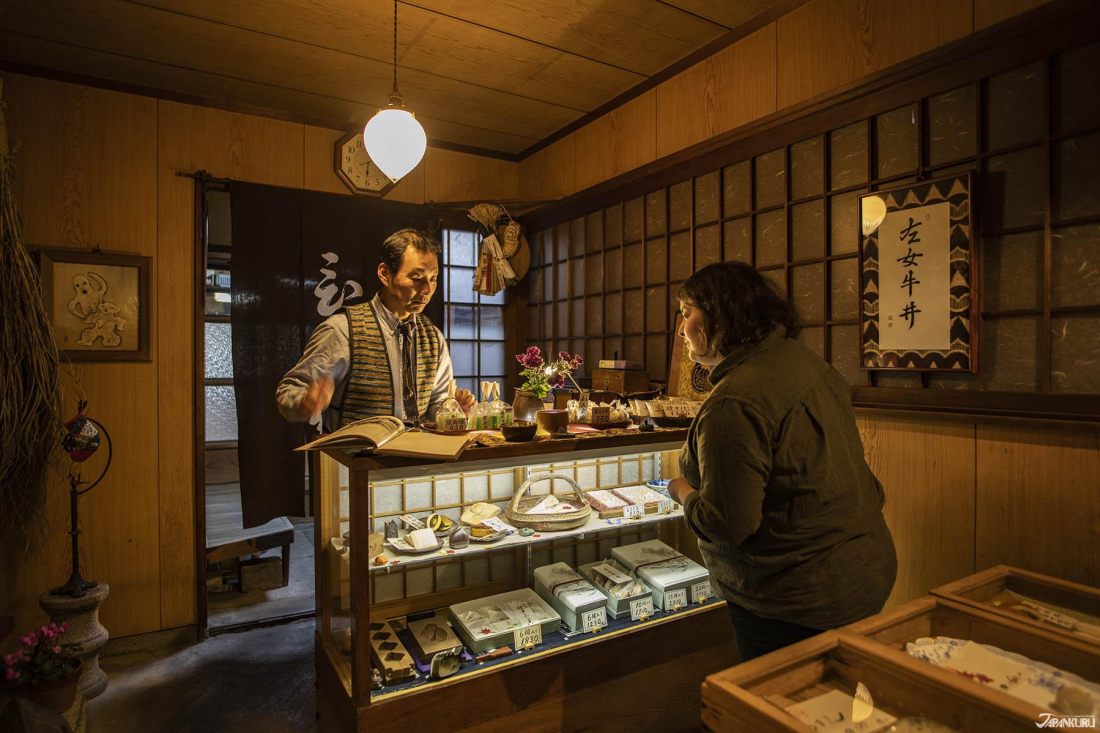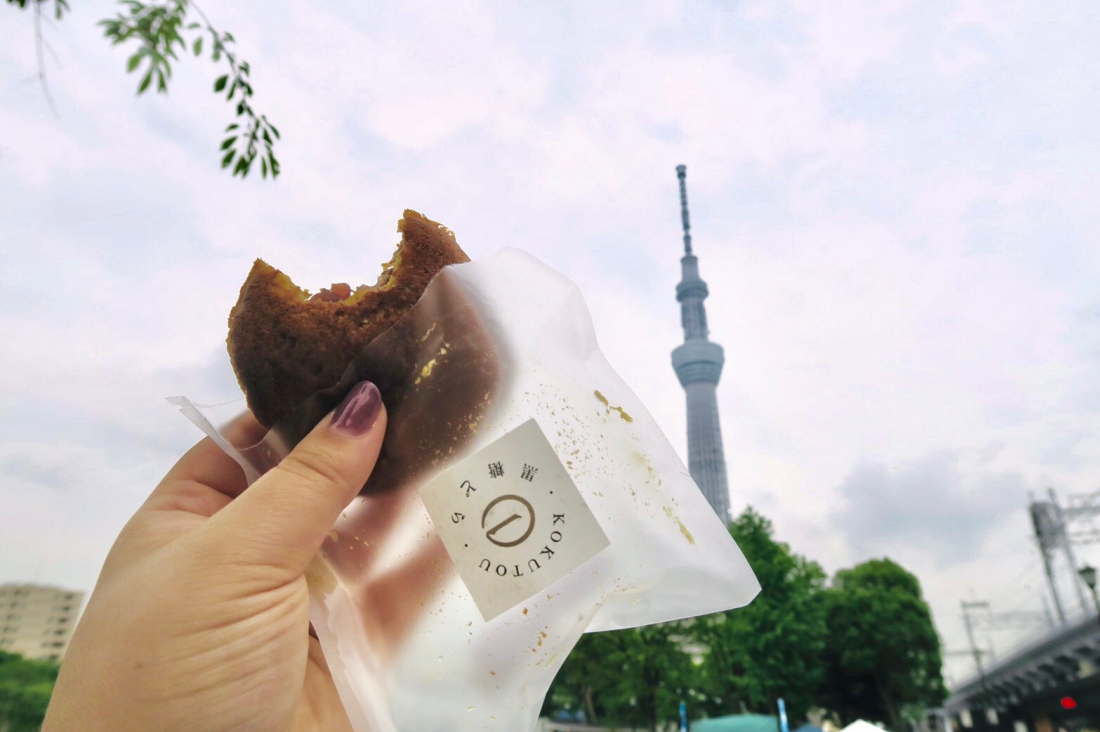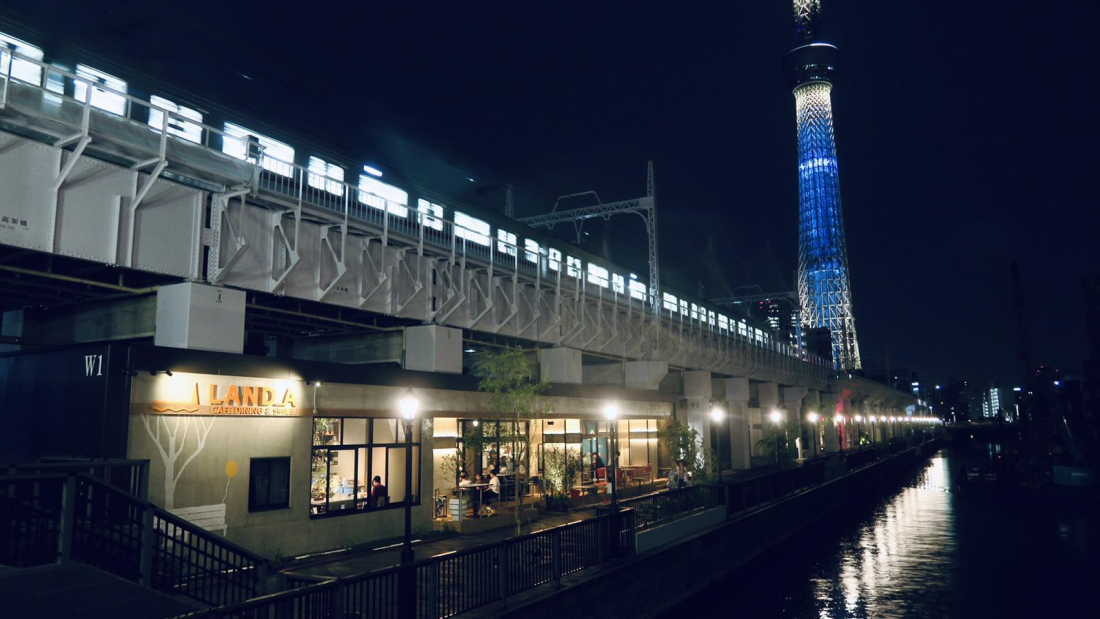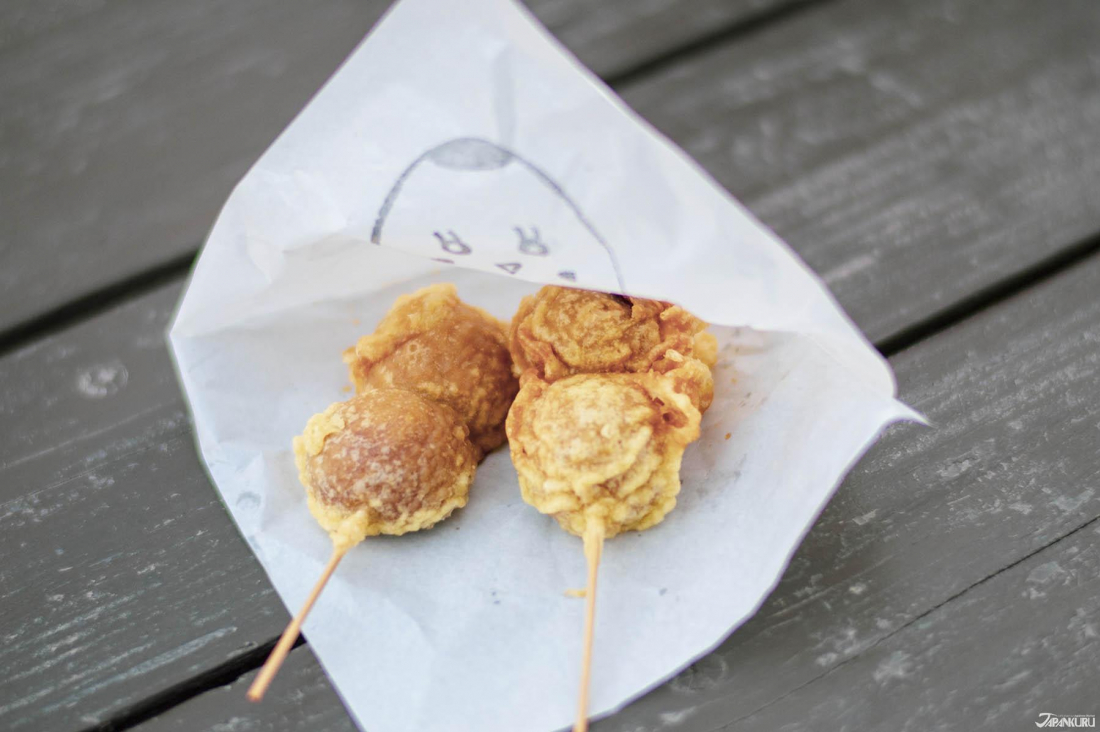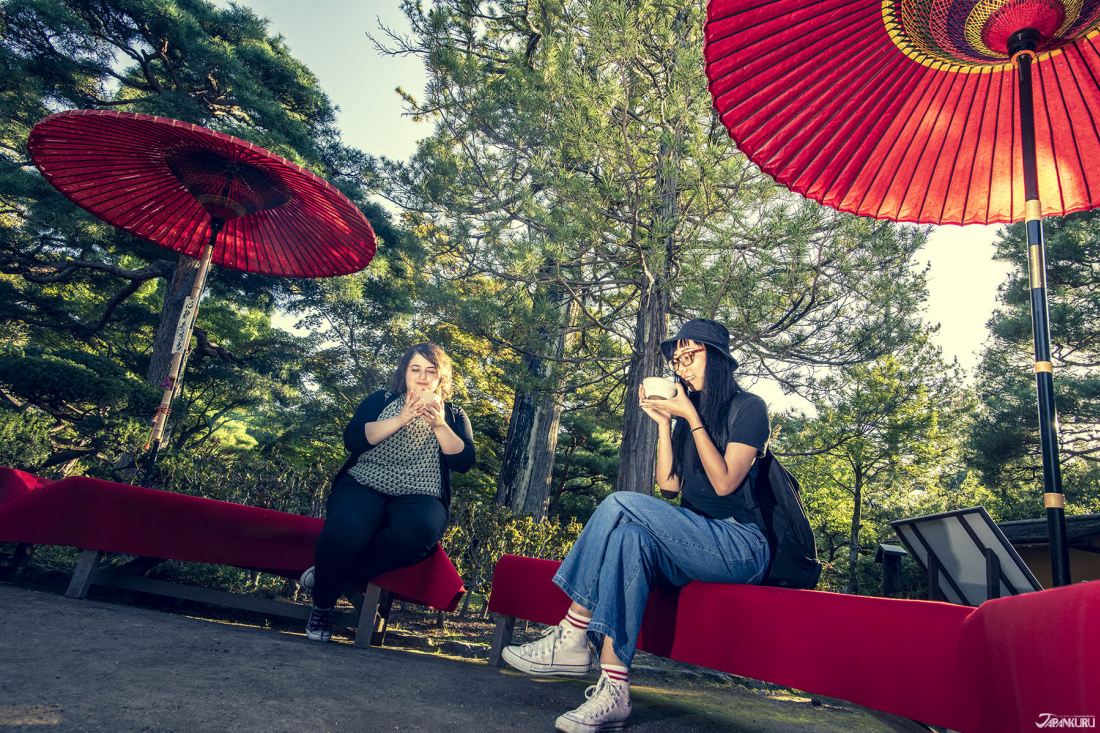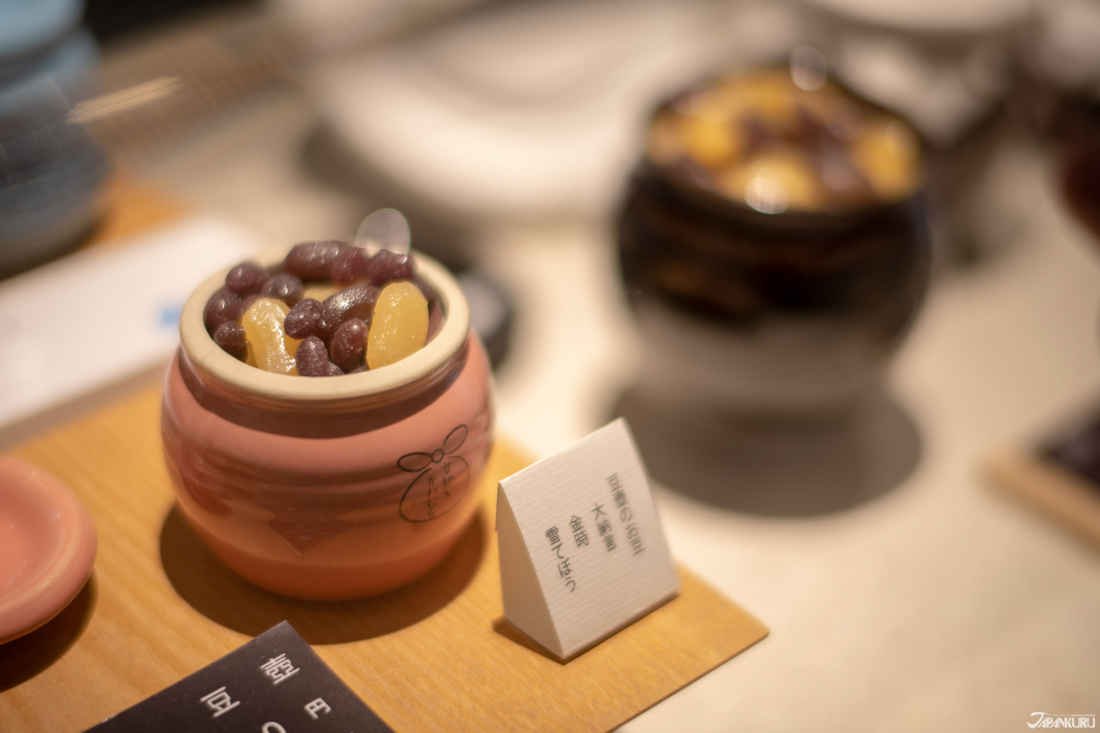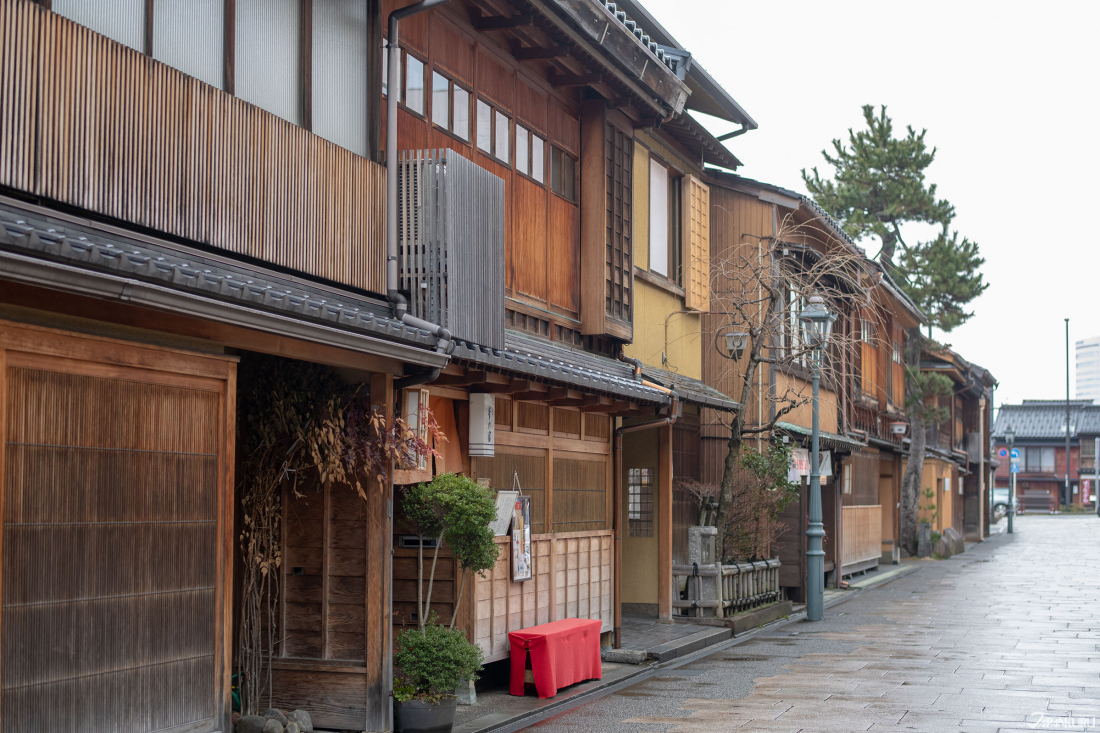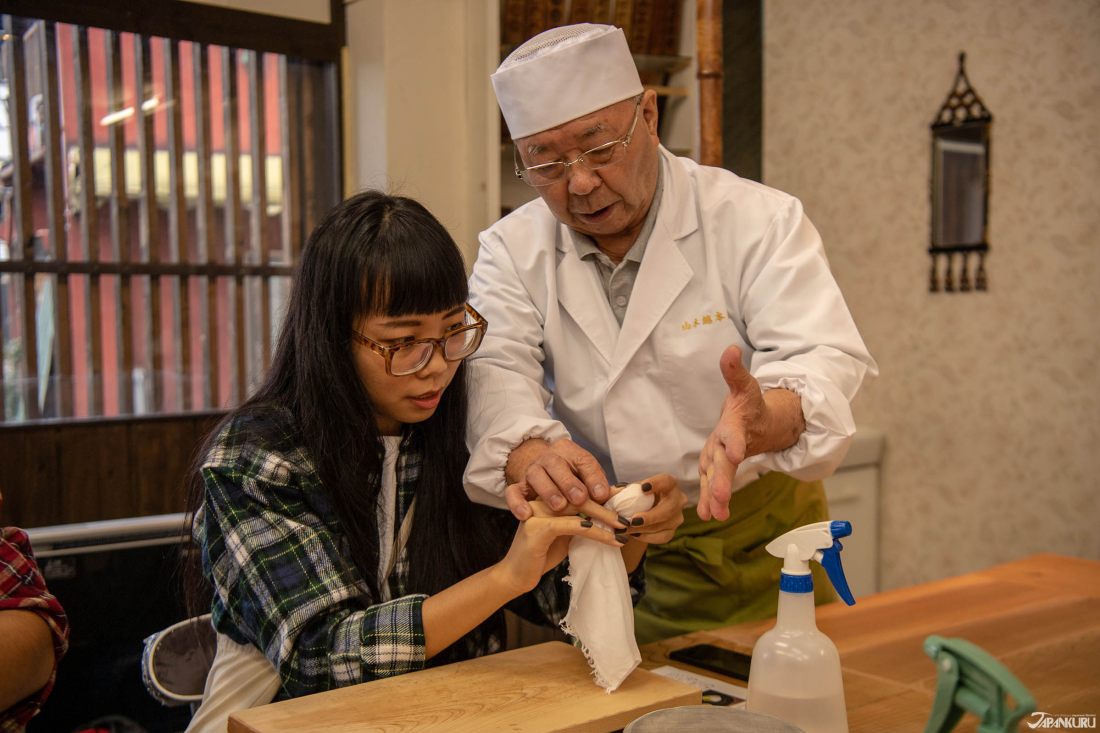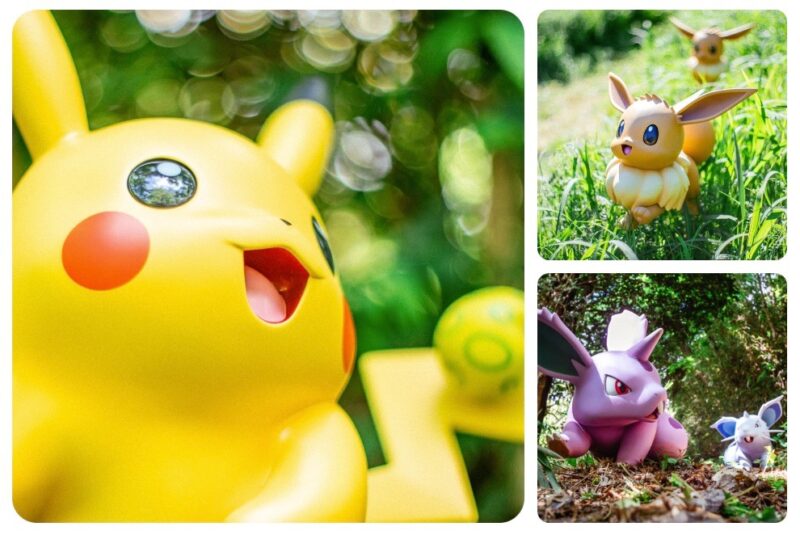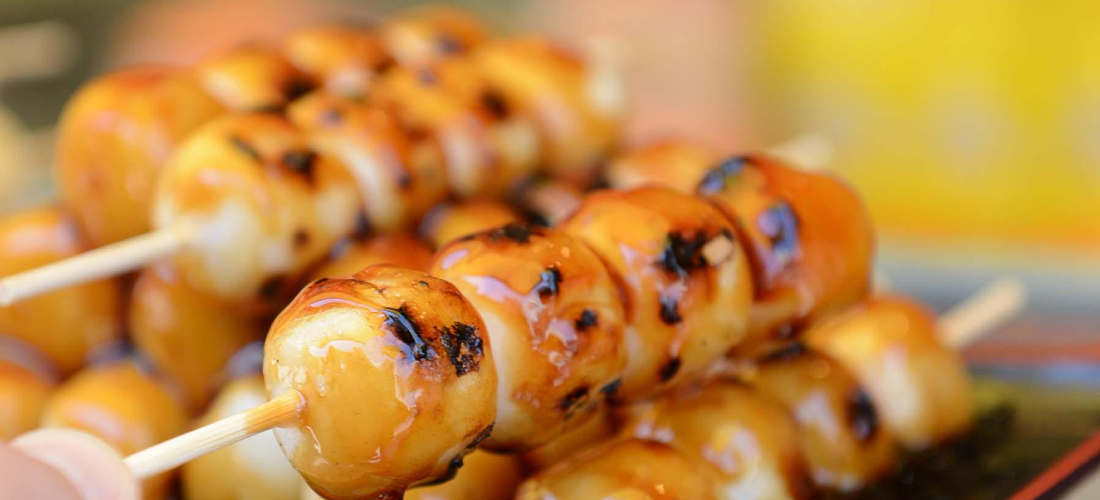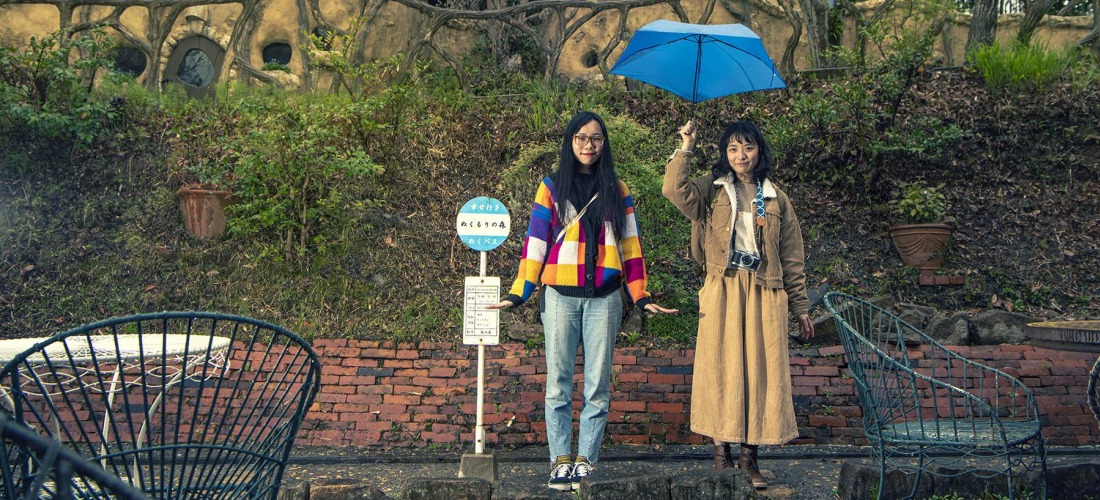CONTENTS
Is it really a trip to Japan if you don’t indulge in a little red bean mochi and matcha wagashi?
Wagashi ・ Traditional Japanese Sweets
Whether you're looking for a break from sightseeing, want to relax and escape from the downpour during Japan's rainy season, or just need a little bit of sugar to keep you going during your travels in Japan, Japan's many wagashi (和菓子) shops, specializing in traditional Japanese sweets, are the perfect little oases.
① Kohakuto in Kyoto
Kyoto is most famous for yatsuhashi (八ッ橋), sheets of mochi often baked or filled with red bean. It's also the home of mitarashi dango (みたらし団子), which is a favorite of certain Japankuru team members. But thanks to hundreds of years of history and culture, Kyoto is a great place to try wagashi of all kinds, including varieties that are less wide-spread these days. Kohakuto (琥珀等) is a kind of sugary-sweet Japanese jelly candy, generally made with kanten instead of gelatin, giving it a unique texture and making it available to vegetarians.
We tried this kohakuto in a little wagashi shop down a side street in Kyoto, called Tachibanaya. Not only was there a wealth of seasonal sweets available in the tiny shop, but the owner brought out a selection of old-fashioned wagashi making tools for us to look at!
② Dorayaki in Tokyo
Of course, while Tokyo's history as a cultural center is shorter than Kyoto, it's still an obvious destination for everything traditionally Japanese! Which means it's a great place to find a high-end wagashi cafe and treat yourself to some skillfully made dorayaki―Japanese pancake sandwiches filled with red bean (or sometimes other treats like custard).
This dorayaki, flavored with red bean and an extra dose of kokuto (黒糖, Japanese brown sugar) came from Ichiya, a wagashi shop and cafe in Tokyo Mizumachi, between Asakusa and Tokyo Skytree.
③ Manju and Matcha in Aizu
Regions like Aizu, in the far west of Fukushima, suffer from the knee-jerk reaction to hearing "Fukushima". But despite the lack of information that reaches the English-speaking world, Fukushima is actually a huge area, and not a tiny disaster zone, and Aizu is perfectly safe. It's also full of beautiful natural scenery and some pretty tasty wagashi. So it's the perfect place to try the unique Japanese creation of tempura kokuto manju, little brown sugar cakes filled with red bean and coated in a layer of crunchy tempura. (Then they're served with a dash of soy sauce!!)
We found these little crunchy-soft cakes at Tsuruga Castle, which is also home to Rinkaku Teahouse and Garden. The manju were being sold at a little snack shop on the other side of the castle, but we couldn't resist the chance to stop into Rinkaku afterward and sip a cup of matcha (iced because of the warm weather!) surrounded by the beautiful teahouse garden.
④ Amanatto in Kanazawa
In Kanazawa we were told to try rakugan (落雁), little sweets made of sugar pressed into beautiful molds. While actually touring the area, though, we were even more fascinated by the city's amanatto (甘納豆)! Amanatto are sweetened beans, made by boiling azuki or black beans (or sometimes other legumes) in sugar, dried, and then coated in another layer of sugar for good measure. The simple sweetness of the beans means they pair excellently with a cup of bitter green tea.
In Kanazawa, we'd recommend the amanatto at Amanatto Kawamura, which is in the traditional teahouse neighborhood of Nishi Chaya-Gai. Not only is it a great place to try more varieties of sweet beans than you could ever have imagined, but the surrounding area is full of gorgeous Japanese architecture and fascinating teahouse history.
⑤ Namagashi in Tochigi
Namagashi (生菓子) are wagashi made with ingredients like bean paste or fruit jelly, and they maintain a certain level of moisture, meaning they have to be eaten fresh! For the wagashi-lover, there's certainly no better way to eat the freshest namagashi than to make the sweets yourself. Namagashi are carefully shaped by hand, molded and delicately pressed to create the shapes of beautiful flowers and natural features, all from natural ingredients. While the recipe might be quite simple, becoming a pro at wagashi chef is no easy task―but there's no reward quite like tasting sweet success and eating the fruits of your labor when you're done!
We got to try making our own traditional bean paste sweets at Yamamoto Kashi, an old-fashioned wagashi shop in Tochigi, founded in the 25th year of Japan's Meiji era (1892)! The master wagashi-makers at the store haven't quite been around since it opened, but they do have decades of experience, making their wagashi workshops fascinating (and pretty fun).
Ready to explore Japan in search of traditional sweets and new wagashi flavors? We'd love to hear about your future itineraries and help you plan on the Japankuru twitter, instagram, and facebook!
Details
NAME:Japanese Sweets
COMMENT
FEATURED MEDIA
VIEW MORE 
A New Tokyo Animal Destination: Relax & Learn About the World’s Animals in Japan
#pr #japankuru #anitouch #anitouchtokyodome #capybara #capybaracafe #animalcafe #tokyotrip #japantrip #카피바라 #애니터치 #아이와가볼만한곳 #도쿄여행 #가족여행 #東京旅遊 #東京親子景點 #日本動物互動體驗 #水豚泡澡 #東京巨蛋城 #เที่ยวญี่ปุ่น2025 #ที่เที่ยวครอบครัว #สวนสัตว์ในร่ม #TokyoDomeCity #anitouchtokyodome

Shohei Ohtani Collab Developed Products & Other Japanese Drugstore Recommendations From Kowa
#pr #japankuru
#kowa #syncronkowa #japanshopping #preworkout #postworkout #tokyoshopping #japantrip #일본쇼핑 #일본이온음료 #오타니 #오타니쇼헤이 #코와 #興和 #日本必買 #日本旅遊 #運動補充能量 #運動飲品 #ช้อปปิ้งญี่ปุ่น #เครื่องดื่มออกกำลังกาย #นักกีฬา #ผลิตภัณฑ์ญี่ปุ่น #อาหารเสริมญี่ปุ่น

도쿄 근교 당일치기 여행 추천! 작은 에도라 불리는 ‘가와고에’
세이부 ‘가와고에 패스(디지털)’ 하나면 편리하게 이동 + 가성비까지 완벽하게! 필름카메라 감성 가득한 레트로 거리 길거리 먹방부터 귀여움 끝판왕 핫플&포토 스폿까지 총집합!
Looking for day trips from Tokyo? Try Kawagoe, AKA Little Edo!
Use the SEIBU KAWAGOE PASS (Digital) for easy, affordable transportation!
Check out the historic streets of Kawagoe for some great street food and plenty of picturesque retro photo ops.
#pr #japankuru #도쿄근교여행 #가와고에 #가와고에패스 #세이부패스 #기모노체험 #가와고에여행 #도쿄여행코스 #도쿄근교당일치기 #세이부가와고에패스
#tokyotrip #kawagoe #tokyodaytrip #seibukawagoepass #kimono #japantrip

Hirakata Park, Osaka: Enjoy the Classic Japanese Theme Park Experience!
#pr #japankuru #hirakatapark #amusementpark #japantrip #osakatrip #familytrip #rollercoaster #retrôvibes #枚方公園 #大阪旅遊 #關西私房景點 #日本親子旅行 #日本遊樂園 #木造雲霄飛車 #히라카타파크 #สวนสนุกฮิราคาตะพาร์ค

🍵Love Matcha? Upgrade Your Matcha Experience With Tsujiri!
・160년 전통 일본 말차 브랜드 츠지리에서 말차 덕후들이 픽한 인기템만 골라봤어요
・抹茶控的天堂!甜點、餅乾、飲品一次滿足,連伴手禮都幫你列好清單了
・ส่องมัทฉะสุดฮิต พร้อมพาเที่ยวร้านดังในอุจิ เกียวโต
#pr #japankuru #matcha #matchalover #uji #kyoto #japantrip #ujimatcha #matchalatte #matchasweets #tsujiri #말차 #말차덕후 #츠지리 #교토여행 #말차라떼 #辻利抹茶 #抹茶控 #日本抹茶 #宇治 #宇治抹茶 #日本伴手禮 #抹茶拿鐵 #抹茶甜點 #มัทฉะ #ของฝากญี่ปุ่น #ชาเขียวญี่ปุ่น #ซึจิริ #เกียวโต

・What Is Nenaito? And How Does This Sleep Care Supplement Work?
・你的睡眠保健品——認識「睡眠茶氨酸錠」
・수면 케어 서플리먼트 ‘네나이토’란?
・ผลิตภัณฑ์เสริมอาหารดูแลการนอน “Nenaito(ネナイト)” คืออะไร?
#pr #japankuru #sleepcare #japanshopping #nenaito #sleepsupplement #asahi #睡眠茶氨酸錠 #睡眠保健 #朝日 #l茶胺酸 #日本藥妝 #日本必買 #일본쇼핑 #수면 #건강하자 #네나이토 #일본영양제 #อาหารเสริมญี่ปุ่น #ช้อปปิ้งญี่ปุ่น #ร้านขายยาญี่ปุ่น #ดูแลตัวเองก่อนนอน #อาซาฮิ

Japanese Drugstore Must-Buys! Essential Items from Hisamitsu® Pharmaceutical
#PR #japankuru #hisamitsu #salonpas #feitas #hisamitsupharmaceutical #japanshopping #tokyoshopping #traveltips #japanhaul #japantrip #japantravel

Whether you grew up with Dragon Ball or you just fell in love with Dragon Ball DAIMA, you'll like the newest JINS collab. Shop this limited-edition Dragon Ball accessory collection to find some of the best Dragon Ball merchandise in Japan!
>> Find out more at Japankuru.com! (link in bio)
#japankuru #dragonball #dragonballdaima #animecollab #japanshopping #jins #japaneseglasses #japantravel #animemerch #pr

This month, Japankuru teamed up with @official_korekoko to invite three influencers (originally from Thailand, China, and Taiwan) on a trip to Yokohama. Check out the article (in Chinese) on Japankuru.com for all of their travel tips and photography hints - and look forward to more cool collaborations coming soon!
【橫濱夜散策 x 教你怎麼拍出網美照 📸✨】
每次來日本玩,是不是都會先找旅日網紅的推薦清單?
這次,我們邀請擁有日本豐富旅遊經驗的🇹🇭泰國、🇨🇳中國、🇹🇼台灣網紅,帶你走進夜晚的橫濱!從玩樂路線到拍照技巧,教你怎麼拍出最美的夜景照。那些熟悉的景點,換個視角說不定會有新發現~快跟他們一起出發吧!
#japankuru #橫濱紅磚倉庫 #汽車道 #中華街 #yokohama #japankuru #橫濱紅磚倉庫 #汽車道 #中華街 #yokohama #yokohamaredbrickwarehouse #yokohamachinatown

If you’re a fan of Vivienne Westwood's Japanese designs, and you’re looking forward to shopping in Harajuku this summer, we’ve got important news for you. Vivienne Westwood RED LABEL Laforet Harajuku is now closed for renovations - but the grand reopening is scheduled for July!
>> Find out more at Japankuru.com! (link in bio)
#japankuru #viviennewestwood #harajuku #omotesando #viviennewestwoodredlabel #viviennewestwoodjapan #비비안웨스트우드 #오모테산도 #하라주쿠 #日本購物 #薇薇安魏斯伍德 #日本時尚 #原宿 #表參道 #japantrip #japanshopping #pr

Ready to see TeamLab in Kyoto!? At TeamLab Biovortex Kyoto, the collective is taking their acclaimed immersive art and bringing it to Japan's ancient capital. We can't wait to see it for ourselves this autumn!
>> Find out more at Japankuru.com! (link in bio)
#japankuru #teamlab #teamlabbiovortex #kyoto #kyototrip #japantravel #artnews
Photos courtesy of teamLab, Exhibition view of teamLab Biovortex Kyoto, 2025, Kyoto ® teamLab, courtesy Pace Gallery

Japanese Makeup Shopping • A Trip to Kamakura & Enoshima With Canmake’s Cool-Toned Summer Makeup
#pr #canmake #enoshima #enoden #에노시마 #캔메이크 #japanesemakeup #japanesecosmetics

⚔️The Robot Restaurant is gone, but the Samurai Restaurant is here to take its place. Check it out, and don't forget your coupon!
🍣신주쿠의 명소 로봇 레스토랑이 사무라이 레스토랑으로 부활! 절찬 쿠폰 발급중
💃18歲以上才能入場的歌舞秀,和你想的不一樣!拿好優惠券去看看~
#tokyo #shinjuku #samurairestaurant #robotrestaurant #tokyotrip #도쿄여행 #신주쿠 #사무라이레스토랑 #이색체험 #할인이벤트 #歌舞伎町 #東京景點 #武士餐廳 #日本表演 #日本文化體驗 #japankuru #japantrip #japantravel #japanlovers #japan_of_insta

Japanese appliance & electronics shopping with our KOJIMA x BicCamera coupon!
用JAPANKURU的KOJIMA x BicCamera優惠券買這些正好❤️
코지마 x 빅 카메라 쿠폰으로 일본 가전 제품 쇼핑하기
#pr #japankuru #japanshopping #kojima #biccamera #japaneseskincare #yaman #dji #osmopocket3 #skincaredevice #日本購物 #美容儀 #相機 #雅萌 #日本家電 #일본여행 #면세 #여행꿀팁 #일본쇼핑리스트 #쿠폰 #일본쇼핑 #일본브랜드 #할인 #코지마 #빅카메라 #japankurucoupon
MAP OF JAPAN
SEARCH BY REGION

LATEST
VIEW MOREEVENT CALENDAR
VIEW MORE





